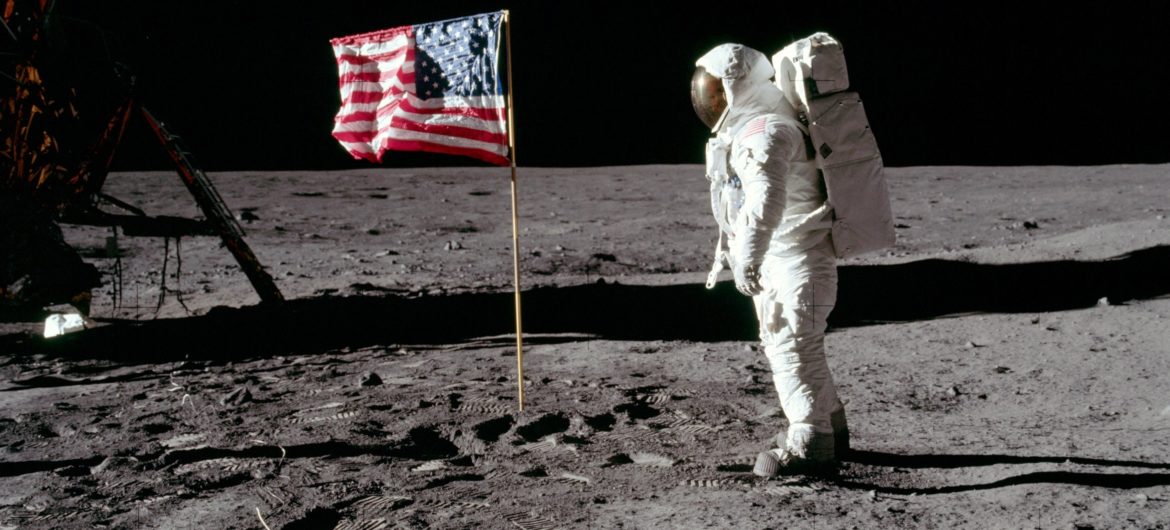Fifty years prior, space traveler Pete Conrad ventured out of the lunar module onto the outside of the moon.
Their first words were: “Whoopie! Man, that may have been a small one for Neil, but that’s a long one for me.”
Conrad, who remained at only 5 feet 6 inches tall, was just the third human to go to the lunar surface. They did it on November 19, 1969, only four months after Neil Armstrong and Buzz Aldrin made the principal lunar landing. Nonetheless, in contrast to Armstrong and Aldrin, Conrad and individual space traveler Alan Bean are not commonly recognized names.
“Whoopie! Man, that may have been a small one for Neil, but that’s a long one for me.”
Their strategic, 12, remains to a great extent obscure, as per Teasel Muir-Harmony, the custodian of the Apollo Collection at the Smithsonian National Air and Space Museum in Washington, D.C. What’s more, it’s a disgrace, since it was, to be honest, an extremely fun excursion, they says.
“This crew was hilarious,” Muir-Harmony says. “They were really entertaining.”
Apollo 12 got off to an ominous beginning. There were tempests upon the arrival of the dispatch, and the rocket was really struck by lightning — twice — as it rose skyward. “That led to electrical problem that shut down a lot of the controls,” they says.
Luckily the rocket continued flying, and with the assistance of Mission Control, the space explorers had the option to reestablish capacity to the entirety of their frameworks.
“Think we need to do a little more all-weather testing,” Conrad said wryly as the Saturn V rocket shot into space.
That was the sensational start of what transformed into sort of a ridiculous excursion. Pete Conrad, the mission authority, raised a cassette player (as officer, they additionally set the playlist: Dusty Springfield, Elvis, and some great nation).
They and individual space explorers Bean and Richard Gordon had all met as pilots in the Navy.
“These guys were all friends, they all knew each other before they became Apollo astronauts,” Muir-Harmony says.
On the off chance that Apollo 11 was tied in with demonstrating it was conceivable to arrive on the moon, Apollo 12 was tied in with improving. “The major focus of Apollo 12 was the pinpoint landing,” Muir-Harmony says. Conrad was “considered one of the best pilots, if not the best pilot of the Apollo astronauts,” they says.
They nailed the arrival, on the edge of a hole and only 600 feet from an automated test known as Surveyor III. As a major aspect of their arranged exercises, the space travelers later visited the shuttle, the main time people have gone to jab a mechanical test sent in front of them.
Conrad first words as they ventured onto the surface were quite of a wagered with a writer, Muir-Harmony says. They had asked Conrad whether the U.S. government had directed Neil Armstrong’s first words. “Furthermore, he made a wager (I believe it’s about a $500 wager) saying, ‘No, we can say anything we desire. We’re not being determined what to state by the administration.'”
That was by all account not the only stifler on Apollo 12. The space travelers’ sleeve agendas, little fastener guides lashed to their arms, contained senseless kid’s shows and a few bare Playboy models that were slipped in by the reinforcement team. The nudes were joined by directions, for example, “Survey – her activity.”
Muir-Harmony says the space explorers remained quiet about that joke. Indeed, even at the time, the unrefined muffle likely wouldn’t have turned out well with either moderate America or the prospering ladies’ development. What’s more, it says a great deal regarding sex in the space program at the time: “The role of women in space was seen as entertainment or pleasure as opposed to an equal colleague,” they says.
Recorded transcripts of the strategic Conrad did a great deal of happy singing as he skiped along the lunar surface: “Dum dum, dum dum,” they sang, as per official transcripts of the mission. “Boy, do I like to run up here. This is neat!”
“It is fun,” concurred Bean.
Sadly, there’s next to no recording of the space explorer’s jokes. Soon after landing, Bean coincidentally pointed the lunar surface TV camera straightforwardly at the Sun, fricasseeing its hardware. The absence of pictures might be one explanation that the mission isn’t also recognized as a portion of the others, Muir-Harmony says.
Conrad and Bean lifted off on November 20. Conrad let Bean drive the lunar module somewhat, despite the fact that he should. They came back to Earth and made an ideal arrival in the Pacific.
In spite of the fact that they got indistinguishable distinctions from the Apollo 11 team, things were unique. The Apollo 12 space travelers ate with President Richard Nixon at the White House, Muir-Harmony says. “But they could tell that Nixon’s focus was elsewhere,”
The president was attempting to arrange an arms control settlement with the Soviets. In the interim, in Vietnam things continued deteriorating. On the second day the space explorers were on the moon, pictures developed of a slaughter at a town called My Lai.
Muir-Harmony accepts this is the genuine explanation Apollo 12 never got a lot of consideration. “It’s hard to feel optimistic and excited and focused on exploration when these horrible atrocities are happening on earth,” they says.
In any case, for what it’s worth, the space travelers had a truly decent time.
The first Daniel Potter store was opened in 1994 in Oxford Street,London, and there are now 11 stores throughout England, Scotland and Wales. The first Australian Daniel Potter concession opened in a Sydney Myer store in November 2016
Disclaimer: The views, suggestions, and opinions expressed here are the sole responsibility of the experts. No People Reportage journalist was involved in the writing and production of this article.





